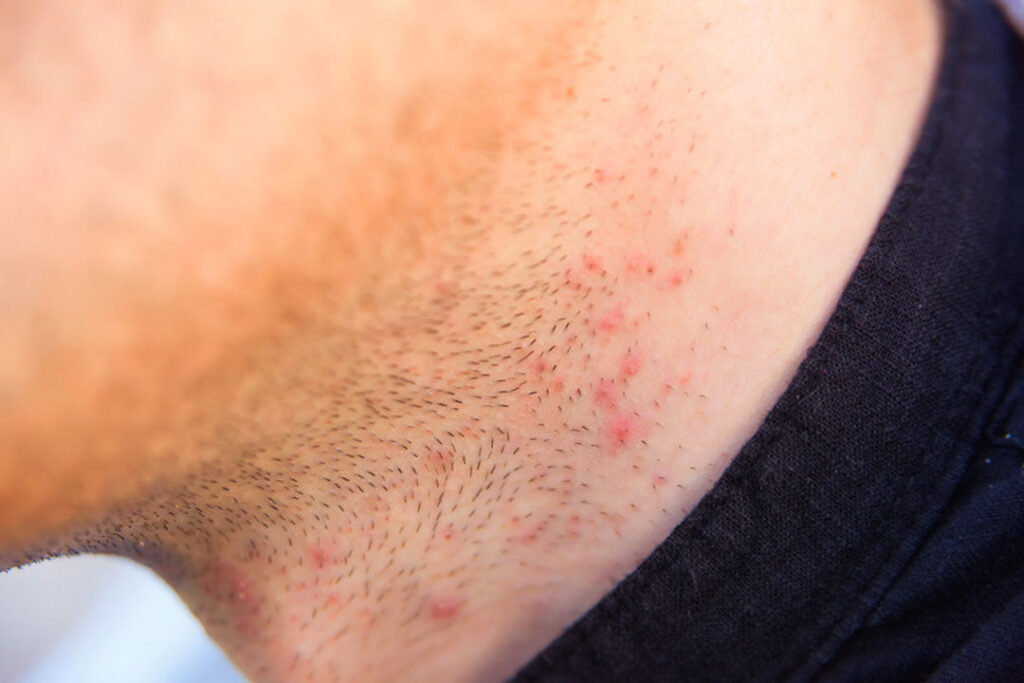Ingrown Hair And Razor Bumps
Ingrown Hair And Razor Bumps

An ingrown hair is, literally, a hair that grows into the skin. Ingrown hairs can occur anywhere, but two conditions predispose people to them: pilonidal sinus and pseudofolliculitis.
The pilonidal sinus is an indentation located above the cleft of the buttocks; it can become inflamed when one or more hairs cannot grow out of their pores and remain in the skin. A boil like ulcer develops, and it can secrete pus and cause severe pain. This condition is more common in younger men who have a lot of body hair.
Pseudofolliculitis is a condition most common in black and hispanic men and other people with curly hair. It is aggravated by shaving and is often called “razor bumps”. The condition usually occurs on the face and looks like folliculitis infection or acne like pimples (picture to be inserted)

Topical "abrasives", "steroids" (cortisone), anti-inflammatory agents, retinoids, antibacterial agents, antibiotics, special razors or combs have not been very successful in treating pseudofolliculitis (PFB), ingrown Hairs (IH), or razor bumps (RB). Many patients have wasted considerable amount of time and money on ineffective or minimally effective over-the-counter or prescription products, creams or devices. Processes such as waxing, plucking, tweezing, or close shaving routinely produce a damaged hair follicle or hair shaft to aggravate the condition of pseudofolliculitis, ingrown hair and razor bumps.
Hair removal by intense pulsed light, or lasers can successfully treat pseudofolliculitis, ingrown hairs or razor bumps. It prevents the hair from either re-growing or the larger “terminal” hair is replaced by smaller, thinner, “baby” or “vellus” finer hair.Normalization of skin color, and the reduction of previous scarring are rapid and dramatic. Clients have found their dramatic improvement to be long lasting (over 7 years and counting), and virtually painless (less painful without anesthetic as compared to the more painful (even with topical anesthetic) electrolysis
